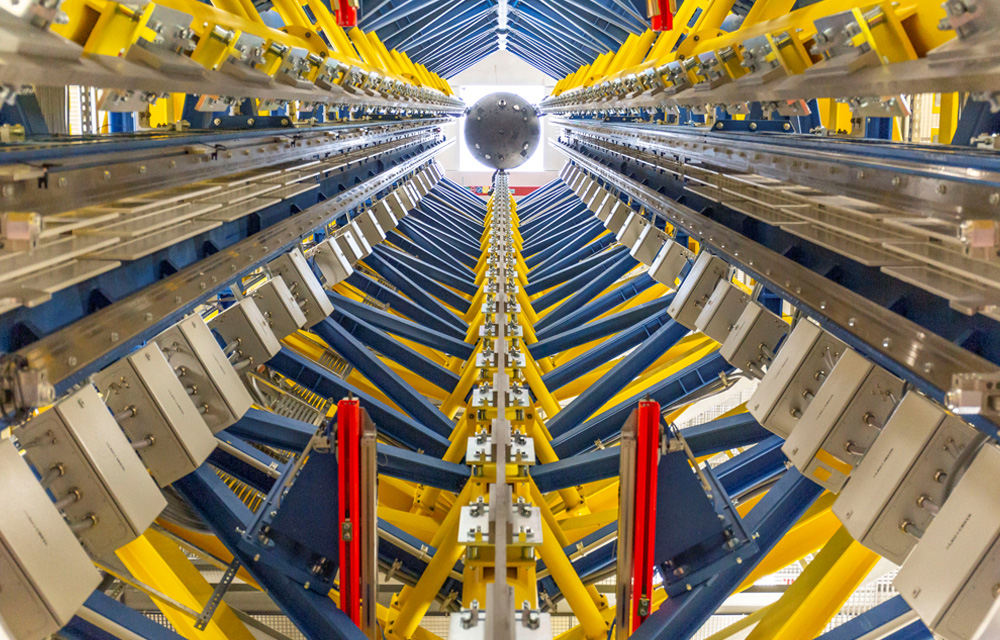With the growing progress and goals in the field of space travel, not only the number of space missions will continue to increase in the future, but also the range and thus the duration of the flight. The associated risk of spacecraft components failing during flight will also increase. In order to be able to guarantee the safety of missions in the long term, it must be possible to react flexibly and quickly to a component failure.
Research objective: Additive manufacturing under space conditions
The Institute of Transport and Automation Technology (ITA) at Leibniz University Hannover is working together with the Institute of Logistics and Material Handling Systems (ILM) of the Otto-von-Guericke-University Magdeburg on a research project in which the additive manufacturing process “laser metal deposition”, which is commonly used under earth gravity, is being developed for operations under the environmental conditions of space. In addition, there is a connection to the research project of the Laser Zentrum Hannover e.V. (LZH) and the Institut für Luft- und Raumfahrt (ILR) at the TU Berlin, in which laser melting of extraplanetary rock under lunar conditions is being investigated. Since the experimental setup of both research projects is similar, the scientists benefit from a lively exchange and joint acquisitions.
Laser metal deposition has the great advantage that damaged surfaces can be repaired directly, near-net-shape components can be manufactured and special alloys can be produced. At the same time, by using the additive manufacturing process, the total mass of spare parts on the spacecraft can be reduced to a minimum.
In laser metal deposition, a molten pool is created on a workpiece by targeting a laser. At the same time, metal powder is fed to the molten pool via a nozzle with the aid of an inert carrier gas. Movement of the laser beam or the workpiece ultimately leads to solidification of the molten bath and the piece-by-piece buildup of the finished component (see Figure 1). To obtain an optimum result, the process parameters of beam power and feed rate must be adapted to the component geometry and the properties of the material used before and during production.
Generation of brief weightlessness in the Einstein-Elevator
In order to be able to simulate the environmental conditions of a space mission during manufacturing, the entire test stand is integrated into the experiment carrier of the Einstein-Elevator. This is a research facility housed in the Hannover Institute of Technology (HITec) and represents a further development of the classic drop tower (see Figure 2). The innovative propulsion concept allows gravitational conditions ranging from weightlessness (0 g) to rocket launches (5 g) to be generated for a few seconds at a high repetition rate.
This is made possible by the special design of the Einstein-Elevator. The drop tower consists of two completely decoupled carrier structures for propulsion and guidance. The experiment carrier is located inside a gondola, which establishes a connection to the traverse and the two drive carriages on the one hand via the coupling rod, and to the guide components on the other (see Figure 3). After activation of the system, the gondola performs a vertical parabolic flight. During this time, the experimental setup is both acoustically and mechanically decoupled from the gondola for experiments to be performed in weightlessness and is in free fall with residual accelerations of <10-6g (microgravity).
The research team led by Dr. Christoph Lotz of ITA is in charge of the Einstein-Elevator and conducts research in the field of “Production under Space Conditions”. Further information at: https://www.hitec.uni-hannover.de/en/large-scale-equipment/einstein-elevator/
Development of the test rig and production of the samples
The challenge in this research project is to develop and characterize laser metal deposition in microgravity and to integrate the test rig into the Einstein-Elevator. To achieve this research goal, scientists are pursuing two primary objectives: One is the stable laser-based generation of a molten pool, and the other is the construction of a conveyor system for powder delivery in microgravity.
The characterization of the manufacturing process is done by examining the created samples. In the process, so-called seed sticks are produced from nickel and titanium alloys with a diameter of 3 mm and a height of 100 mm. The manufacturing process can be seen in
Figure 1 based on the preliminary tests carried out under earth gravity. Subsequently, the specimens are analyzed in terms of their geometry, metallography, hardness and tensile strength and compared with the specimens manufactured under earth gravity. Fabrication is performed within a process chamber flooded with inert gas, where a vertical feed motion can be performed to additively build the seed sticks.
Since only four seconds of weightlessness are available to the experiment during a flight in the Einstein-Elevator for the fabrication of a seed stick, several flights are required. In order to perform as many flights as possible in succession without having to open the gondola, a sample carousel is also integrated into the process chamber. Currently, the research project of ITA and ILM is in the development and set-up phase of the test rig.


